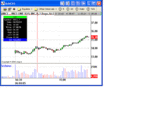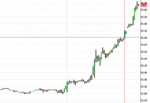Mr. Charts
Legendary member
- Messages
- 7,370
- Likes
- 1,200
....3
It reversed immediately and moved up until it reached 35.47 when it pulled back for a minute or so with mixed evidence on micro-analysis and then suddenly the sellers came in and I exited as shown. It has continued to drift down ever since and is currently a whole dollar lower.
Both swings gave me a total of $2.20 per share.
No indicators used, just one of my patterns of trading behaviour, watching the market moves and confirmation from micro-analysis.
I hope some find this interesting and some decided to watch the stock after my heads up before open and actually made some money.
I always think it's useful to see how other traders think and trade.
Richard
It reversed immediately and moved up until it reached 35.47 when it pulled back for a minute or so with mixed evidence on micro-analysis and then suddenly the sellers came in and I exited as shown. It has continued to drift down ever since and is currently a whole dollar lower.
Both swings gave me a total of $2.20 per share.
No indicators used, just one of my patterns of trading behaviour, watching the market moves and confirmation from micro-analysis.
I hope some find this interesting and some decided to watch the stock after my heads up before open and actually made some money.
I always think it's useful to see how other traders think and trade.
Richard



